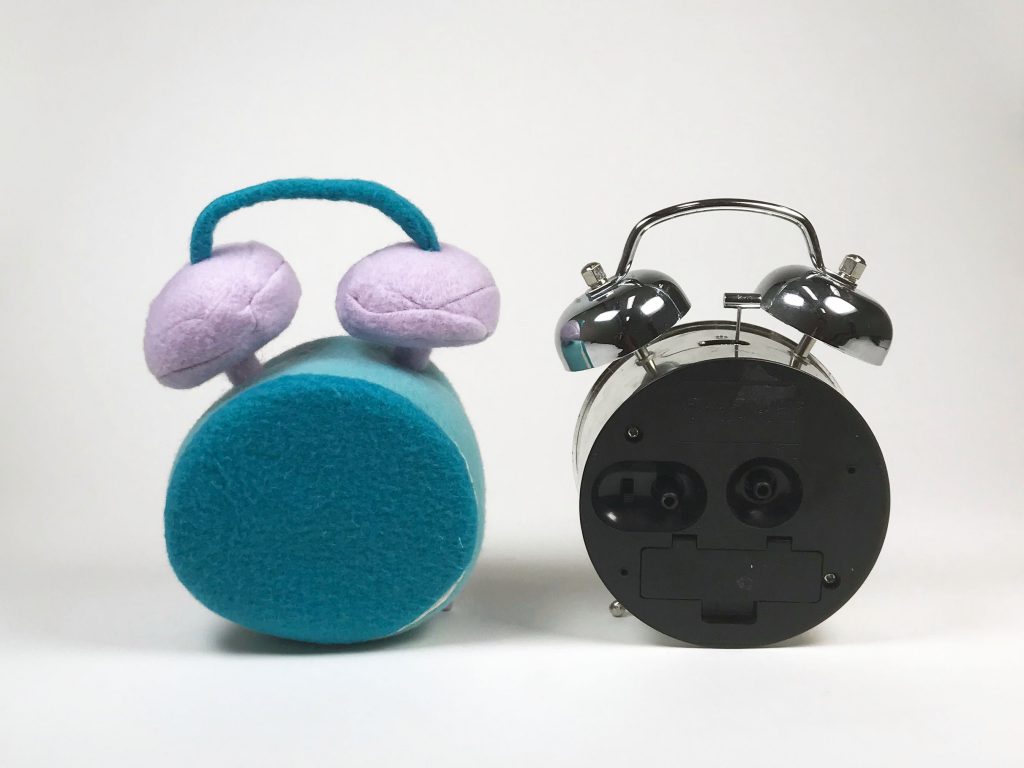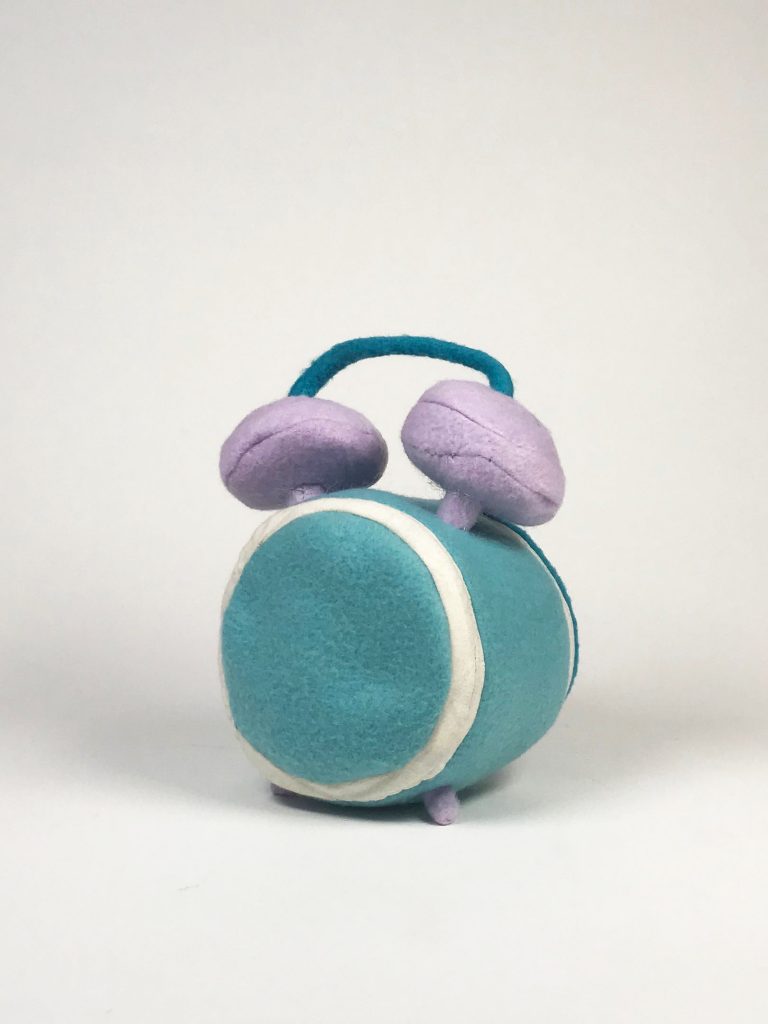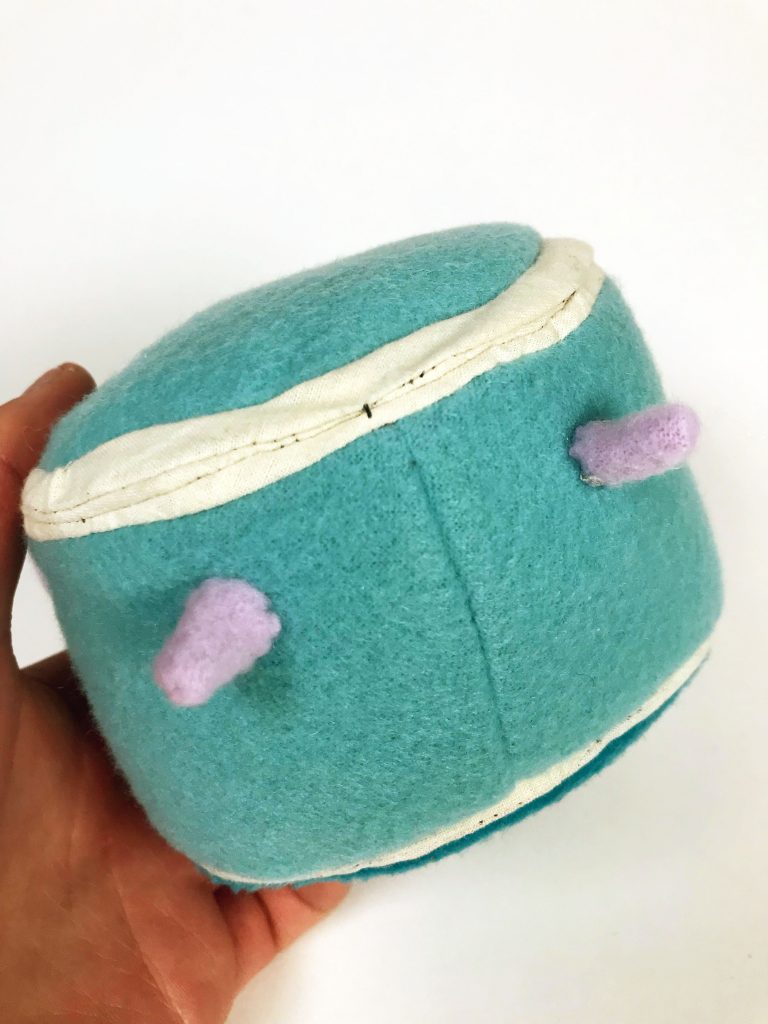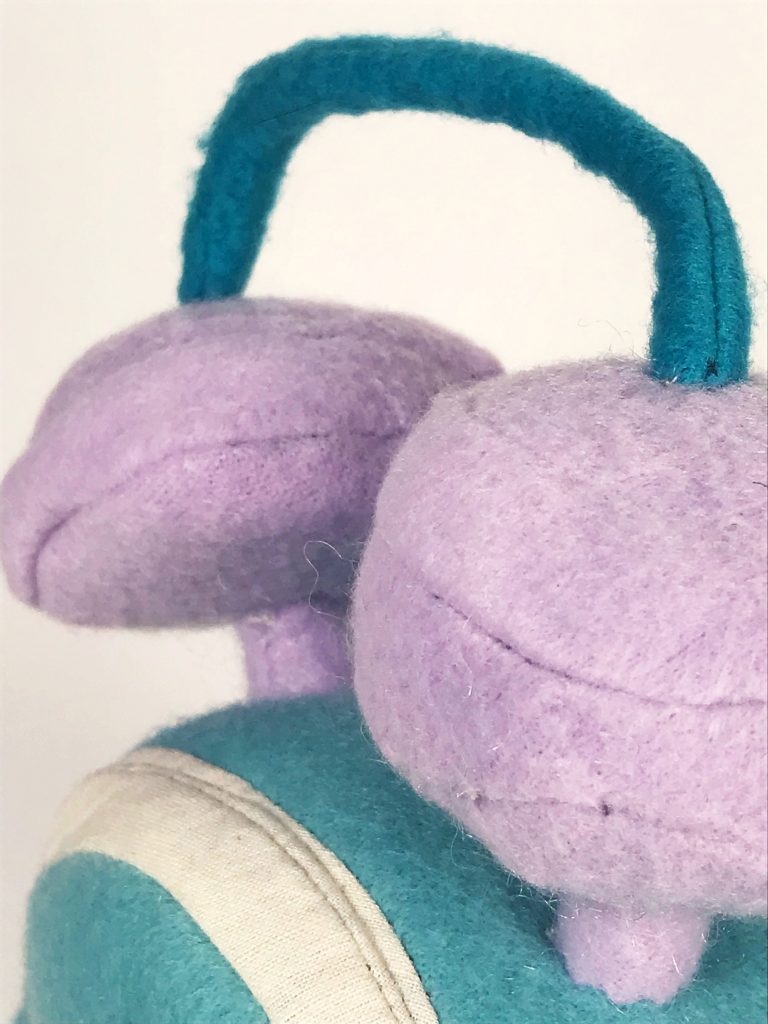Doppelganger – Julia
Starting Out
Before beginning this project, I knew I wanted to replicate an object that I had some personal connection to, so I chose my alarm clock, which I’ve used since middle school, because I have such a love-hate relationship with that clock. For the doppelganger, I wanted to create something that was very cute, soft, and friendly, to juxtapose against the actual function of an alarm clock, and the annoyance and frustration I have in the morning towards this particularly obnoxious one.
Because I wanted my doppelganger to appear friendly and huggable, like a stuffed animal you could go to sleep with, I chose to use colorful fleece in different shades of blue and purple. In addition, I decided to use muslin for the border around the face of the clock, as I not only wanted to have a clear distinction between the face of the clock and its body, but I was also a little worried that I wouldn’t be able to create smaller details with the thicker fleece. Furthermore, when I was first planning out my doppelganger, I wanted to emphasize the irony of a cuddly alarm clock by making the object look almost quilted, like bedding, through the addition of appliques and top-stitching. Although I ended up abandoning this idea once I started sewing the clock together, as it would have taken too much time, the muslin was initially supposed to represent the binding around the edge of a quilt or blanket.
Challenges
When starting the pattern-creating process, I first covered the whole clock in several layers of tape, intending to create my entire pattern using that method. However, as I started to cut out each piece using an x-acto knife, I realized that my pattern would be much more accurate and true to the original clock if I just used a ruler and compass to create a pattern for the body. However, I did use the tape method for the bells of the clock, cutting off the tape for each bell in a spiral shape. Although I simplified the form of the clock by ignoring the indents on the back and the hammer in between the two bells, I did want to recreate how the face and back of the clock extend slightly beyond the sides of the body, producing a small lip. However, because each piece of fabric that made up the lip was roughly 1/16th – 1/8th inch wide (without seam allowance), it was really difficult for me to evenly sew in a curved line around the edge of the clock body, so all of these thin edge pieces ended up irregularly shaped.
In addition, another challenge I faced was with stuffing my form. After filling my doppelganger with poly-fil, I noticed that the form had lost a lot of its details, and that it ended up much rounder that what I had imagined. In order to fix this, I inserted round pieces of thick paper at the front and back of the clock body, and at the base of both bells, which overall made the doppelganger look more like the alarm clock, though it lost a little bit of its hug-ability.
Final Project



Take Aways
Overall, I really enjoyed exploring different methods of pattern-making through this project, and although I found it very difficult to copy a solid, rigid object exactly, it was really interesting to further explore form and the effect of an object’s materials on both its physical appearance as well as the emotions and feelings it evokes. In the future, or if I had more time with this project, I’d love to play with size and possibly scaling up my clock to be a giant pillow. In addition, if I were to recreate other objects that had sentimental value to me, like my alarm clock, I think it’d be interesting to incorporate more elements from my childhood, such as particular fabrics, motifs, or shapes, in order to tell a story and represent the memories I have of younger-me.


